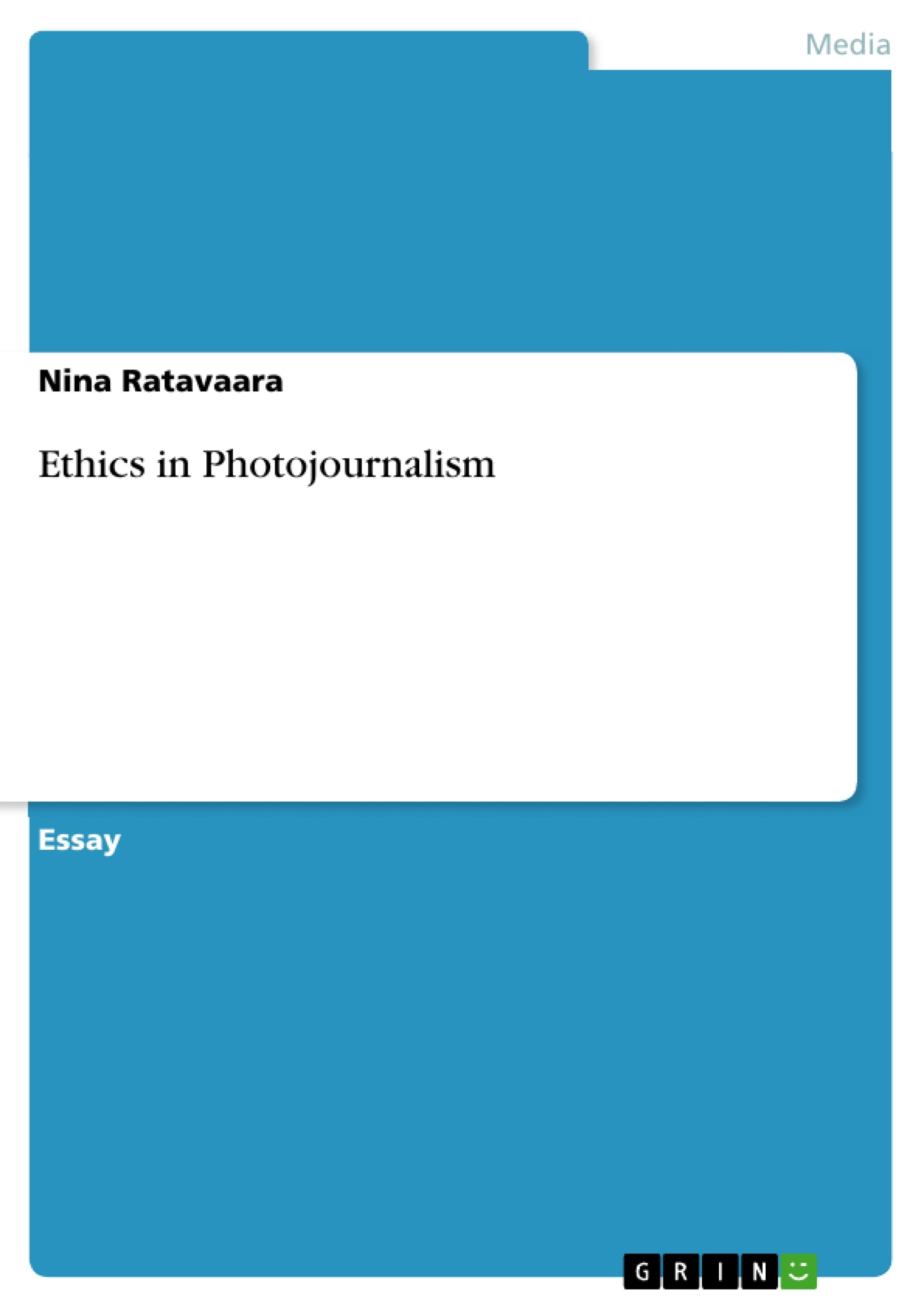The Mohammed cartoons, torture photos from Abu Ghraib, videos from school shooting, and pictures from dead bodies in the London terrorist attacks taken by other victims are visual contents that we all had to deal with in the last years.
The discussions on the changes for journalists caused by digitalization are ubiquitous. But mostly they focus on decreasing readership numbers, how to reconnect with the public, and on grassroots journalism. Ethical questions usually are concerned with issues such as tabloidization, sensationalism, and emotionalization- in short, quality loss in journalism. Journalistic codes are updated and adapted to the new demands.
Other societal debates concentrate on possible negative influences of pictures in news media, video games, music videos, and such- usually containing violence and/or sex. But there is a lack of discourse on ethical challenges concerning photojournalism. During or after a tragedy like school shootings there is lots of talk but the ferocity of those arguments is neither reflected in professional debates of journalists on ethics in photojournalism nor in journalistic codes. However, those issues are gaining importance proportional to the rising significance cameras, picture taking, and visual media in people’s lives. This essay therefore is summarizing current debates about journalism ethics, focusing on visual media. Those issues are illustrated with two examples: the Mohammed cartoon-incident and school shootings at the Virginia Tech University, USA and in Jokela, Finland. The question to be answered is what problems exist concerning ethical issues in photojournalism and how they possibly could be improved.
Table of Contents
- 1. Introduction.
- 2. On journalism ethics....
- 3. On photojournalism and ethics.........
- 4. Examples..
- 5. Conclusion.....
- 6. References.
Objectives and Key Themes
This essay explores the ethical challenges facing photojournalism in the contemporary media landscape, which is characterized by a surge in visual content and the rise of citizen participation. The essay examines how the increasing prevalence of images and the blurring lines between professional and amateur photography pose new ethical dilemmas.
- The impact of digitalization and its implications for picture manipulation.
- The role of ethics in photojournalism amidst the rise of citizen journalism and amateur photography.
- The ethical considerations surrounding the publication of violent and tragic images.
- The potential influence of images on audiences and the need for responsible image dissemination.
- The role of journalistic codes of ethics in navigating these evolving challenges.
Chapter Summaries
- 1. Introduction: This chapter introduces the essay's focus on the ethical dimensions of photojournalism, highlighting the growing prominence of images in contemporary society and the ethical issues arising from the increasing use of visual media.
- 2. On journalism ethics: This chapter delves into the established ethical principles and codes of conduct within journalism. It examines the evolution of journalism ethics, the various types of codes that exist, and the challenges of enforcing and adhering to them in practice.
- 3. On photojournalism and ethics: This chapter explores the unique ethical considerations surrounding photojournalism. It discusses the historical perception of photography as a truth-teller and analyzes the impact of digitalization on the practice and perception of photojournalism.
Keywords
This essay primarily focuses on the ethical considerations of photojournalism, citizen journalism, digital manipulation, visual media, and the role of journalistic codes of ethics in navigating these evolving challenges. It examines the influence of images on audiences and the ethical implications of publishing violent and tragic content.
- Quote paper
- Nina Ratavaara (Author), 2009, Ethics in Photojournalism, Munich, GRIN Verlag, https://www.grin.com/document/178929




